Romani students in Czech Republic learn Romani history at the 18th BARUVAS meeting
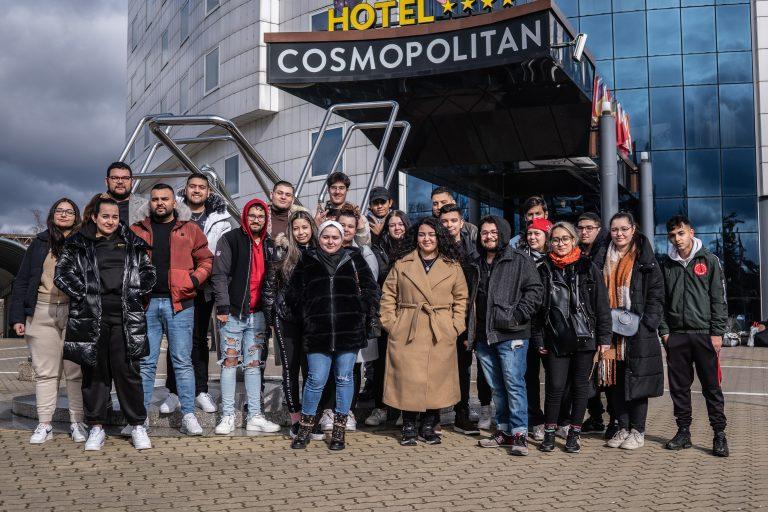
The 18th BARUVAS gathering was held in Brno, Czech Republic from 23-26 February, mostly for new Romani Scholarship recipients and several experienced veterans of the ROMEA organization's scholarship program. The main purpose of the meeting was for these newcomers to be familiarized with the history of the Roma and to show them how it has been transforming along with the public perception of Roma.
The Brno gathering was aimed above all at students who were attending for the first time. “We know from previous experience that our new scholarship recipients are mostly unaware of the history of the Roma. This subject is not taught at school, but in order to work with the students on their personal development, it is important that they know their own history,” says Vanesa Harvanová, co-organizer of BARUVAS at the ROMEA organization.
Most of the students met up with organizers as is traditional at the main railway station in Prague on a Thursday morning, where the friendships already began to form. The trip to Brno takes three hours and there was a lot to discuss during the train journey.
The students introduced themselves and talked about what they like, such as their favorite literature or music. After arriving in Brno, more students from Moravia and Silesia joined the small group coming from Bohemia, and everybody went to the hotel together.
After being accommodated at the Cosmopolitan Hotel, everybody had dinner together and took a nighttime walk to the Cathedral of Saint Peter and Paul in Brno. There in the public garden, get-to-know-you games were held which allowed the students to get to know each other better and discover more interesting information about themselves as a group.
The students were then divided into smaller groups for work on other activities. On Friday we focused on the history of the Roma.
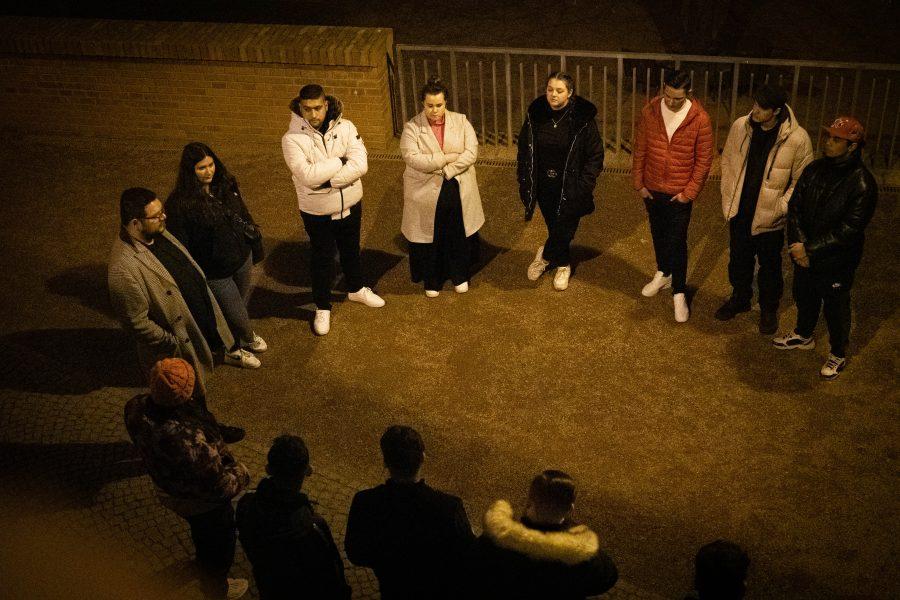
After arriving at the Museum of Romani Culture, half of the students were handed over to a guide who led them on a tour of its permanent exhibition, “The Story of the Roma”. The other half created their own reports about famous Romani figures.
“While the other half of us was taking the tour, our half worked in small groups on reports about famous Romani people. It was interesting to listen to information about the lives of Charlie Chaplin, Tyson Fury and Johann Trollmann,” says Kateřina Drapáková, who is an architecture student at the Czech Technical University in Prague.
In addition to figures from abroad, the students also worked on Czech figures of Romani origin. Their reports included Jarmila Balážová, Iva Bittová, Jan Cina and Emil Ščuka.
The director of the museum, Jana Horváthová, also came to greet us and told the students how the museum came about and what awaits it in the future. After both groups had toured the permanent exhibition, we had lunch at the Beng Café at the museum.
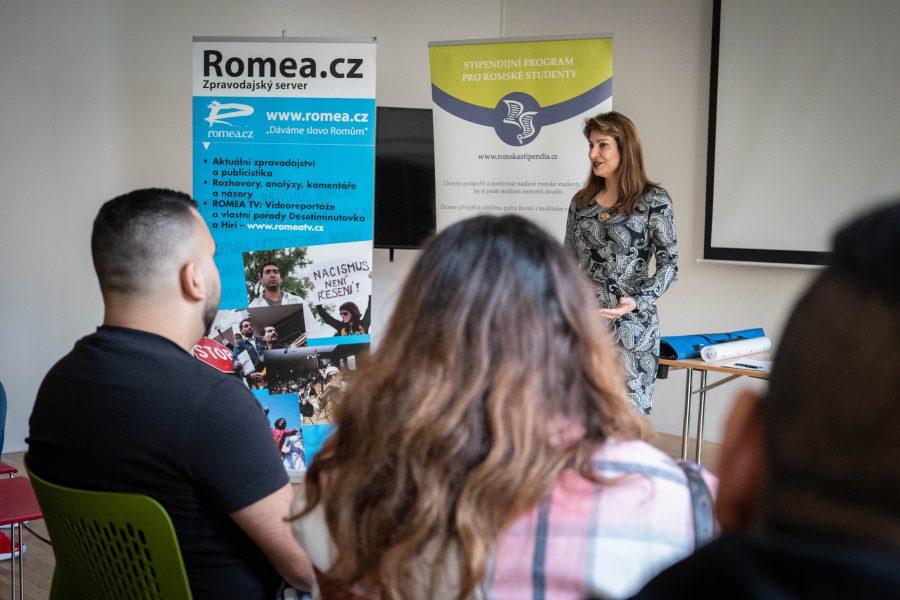
Mr Daniel prepared halušky (similar to gnocchi) with sauerkraut and charcuterie, which is a typical Romani dish. After this hearty meal the second part of Friday’s program got underway.
On Brno’s Cejl Street, where there is a basement training venue, the group of Romani students learned how to respond to certain situations, how to behave on different occasions, and how to communicate with people. Let’s call this section the basics of etiquette.
Working in groups, the students were given different subjects and had to present the situations and themes in short skits. After each skit we discussed whether the approach was correct and whether something could have been done differently according to the basics of etiquette.
“We believe that learning through play is the best way to make sure students remember as much as possible about the subject under discussion. One could see they enjoyed the skits, and it was also apparent that they were thinking about them. Everybody joined in and we were happy that the students were having a good time,” says Harvanová.
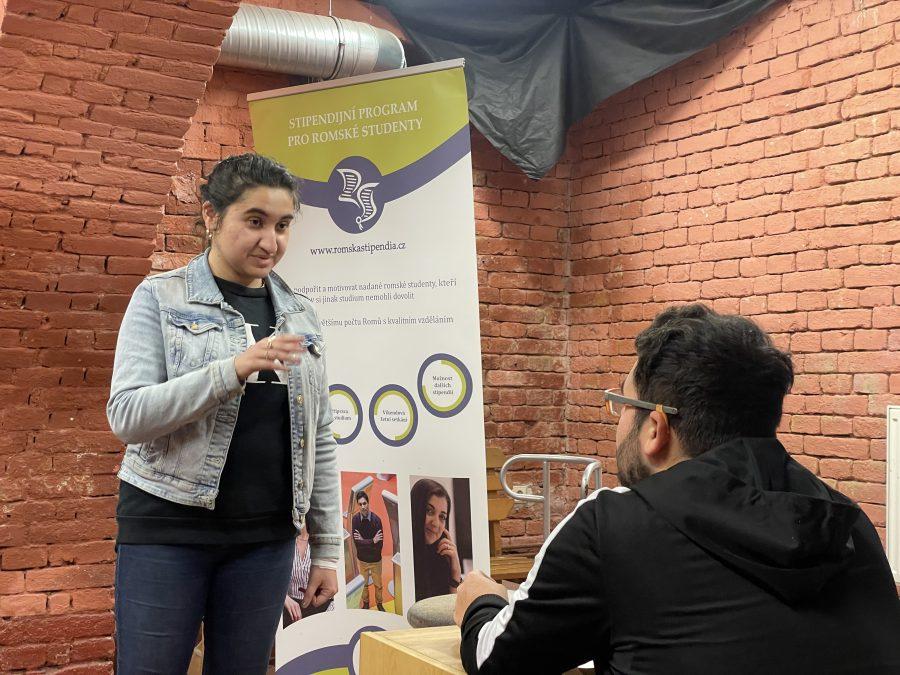
After these long days and dinner at the Cosmopolitan, the students went back to their rooms and played cards, read, or just talked with each other. That is exactly why the BARUVAS meeting is so brilliant: The students bond and become friends, which will be good for them in the future.
Saturday’s program ended up being full of complications and reversals of fortune. In the morning the students learned the basics of journalism, including how to interview others using the MoJo (mobile journalism) technique.
Working in small groups, they tried out the jobs of cameraman, director and moderator, all with the aid of smartphones. After this introductory, mock training and some mental preparation, the students were able to go into the field.
The weather, however, was against us, as sunshine was alternating with a blizzard every 10 minutes, so we had to work with our Plan B. Brno, as the capital of Moravia, has several shopping malls, so the Vaňkovka Center served as our practice run for surveying public opinion about discrimination and hate speech.
The students broke into teams and spent an hour and a half interviewing passers-by. The results of their work will soon be available and we have a lot to look forward to!
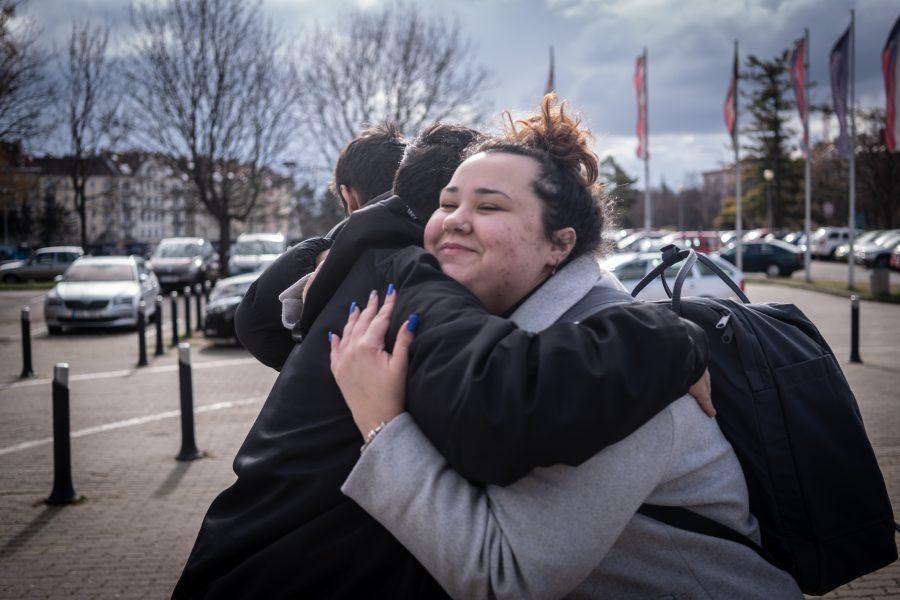
Sunday morning meant it was time to leave Brno. The students said goodbye, took photos together, exchanged phone numbers and promised to see each other soon.
The final group photo of the students in front of the hotel on that freezing Sunday morning marked the end of the BARUVAS gathering. Everybody headed home: Some students left the larger group already in Brno while others traveled to Prague, where their parents came for them or from which they made their own way home.
BARUVAS is meant to bring people together, to show them that they are not alone, to create healthy competition among them, and to encourage them on their paths toward a better education. All of this has once again proven to be true: the BARUVAS gathering, which changes the lives of Romani youth, was once again a great success, and we are already preparing the next one, which will be full of interesting experiences like all the rest.